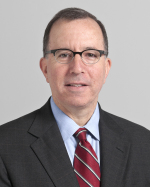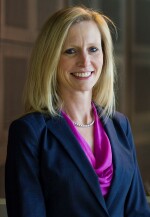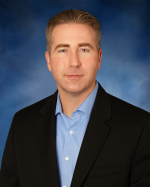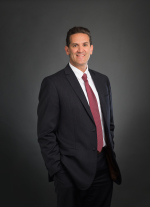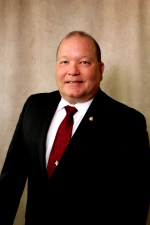What were hospital executives focused on in 2020?
February 09, 2021
by John W. Mitchell, Senior Correspondent
Read the Hospital Spotlight column every month in this magazine and you will learn much about individual hospital operations from senior leaders on the frontline in achieving good outcomes, safety, and cost-efficiency.
But review these leaders as a group, and a roadmap of the most pressing issues emerges.
The pandemic
As the year wore on, it’s no surprise the pandemic began to consume more and more of hospital administrators’ bandwidth.
Despite the widely publicized stress that the pandemic has wrought on hospitals and health systems, Rochelle Johnson, director of nursing, Birth Center at Regions Hospital, told us in October that they still rely on their core values in responding to the crisis. Johnson, who helped design the birthing operation from the ground up, cited Region’s values as commitment to high-quality care, family-centered care, and health equity.
“COVID has thrown all of healthcare for a loop,” she said. “We’ve had to change a lot of the practices we’ve had. I believe we’ve been able to hold onto our values at our birth center.”
She said that they have had to be "thoughtful and innovative" in how they live by their values. For example, in the multicultural population they serve, it's vital to their patients and their families that they still allow others into the birthing room. By adopting new technology (in part funded through the health systems foundation) such as tablet computers and applications, and working through their community partnerships, they could still accommodate one to two people in birthing rooms, despite COVID-19. They are also conducting many post-partum follow-up visits remotely.
Vanessa Roshell-Stacks, former vice president, Care Coordination, Clinical Documentation, and Hospital Operations at Rush University Medical Center, reported in our Nov/Dec issue that their early investment and focus on outreach patient data analytics paid off. It has helped monitor re-admission rates among COVID-19 patients.
“During the COVID crisis, we have continued outreach calls and expanded more longitudinally to follow patients post-discharge for 14 days to understand what their experience has been, where the opportunities are for us to improve our transitions to care, where there are gaps in the community (ability to receive medications, transportation back to facilities, inability to engage on virtual visit),” said Roshell-Stacks.
She stressed that analytics is at the root of a culture of the best care for all patients, not just COVID-19 patients.
In our August issue, Dr. Ed Sabanegh, president of the Main Campus and Regional Hospital System for Cleveland Clinic, said hospital administrators need to be prepared to make permanent changes in the aftermath of COVID-19. This includes “to work relentlessly” to render care to patients in their homes.
“We need to continue to learn how to stay connected as a team in this new world,” he said. “All of these things are growing in importance as we adapt to this hybrid of inpatient, outpatient, and home healthcare.”
A laser-focus on patients has consistently helped Cleveland Clinic rank among the country's top hospitals. Sabanegh sees increased demand for behavioral health and chronic diseases as two of the fastest accelerating areas of patient need in medicine. For Sabanegh, an engineering student turned Air Force physician and urology surgeon, healthcare leadership is a calling.
“I became fascinated with the privilege to help people, seeing medicine as a crossroad between science and humanity,” he said.
New hospital, new services and better outcomes
With the focus on COVID-19, it’s easy to overlook that some hospitals were opening new campuses and expanding services. In a project first envisioned more than a decade ago, Kris Gose, president of the University of Oklahoma Medical Center (OU Health) relied on her insight as a former pediatric nurse and chief nursing officer to oversee the design of its new patient tower.
“…we continue to look at post-acute opportunities to ensure patients aren’t staying in the highest-cost delivery settings to achieve their healthcare goals,” Gose told HCB News in our March issue. “We’re looking at primary care, urgent care centers, and telemedicine. We’re continuing to look at things you see on the national trends, but we have this demand as well as the academic tertiary/quaternary system in the state.”
Among its services, OU is the state’s only Level I Trauma Center, which will be further supported with a growing burn program. Separate ORs for scheduled and trauma patients will open in the new tower, as well as expanded expertise in new services, including geriatric and palliative care.
The new facility will enable OU to expand the state’s only bone marrow cancer program. Other cancer services, such as a medical liquid tumor program, will allow patients to receive more personalized care targeting their specific cancer. A new intensive care unit is also expected to help lower length of stay for the academic medical center.
For Brett Lee, president, Texas Health Frisco, opening a new hospital has been the culmination of a commitment to caring for others that began when he first served as a hospital volunteer at age 12. The son of hospital clinician parents, he moved on to providing care as a physical therapist. He joined Texas health a year ago as the administrator for its newest facility in Frisco.
“From the very beginning, we have been very inclusive of the staff in terms of how we operationalize the hospital,” explained Lee, in our April issue. “We had a series of sessions with our staff and clinician partners to design all the workflows that would go into this hospital. We had two all-day mock patient events where we tested those workflows and continued to develop them with our staff.”
To achieve the best outcomes, Lee pays attention to workplace culture. He and his leadership team are visible, holding daily rounds and safety huddles. They have also engaged the Ritz-Carlton service model that emphasizes the customer experience for both patients and their families. They spent three months testing their processes, including sending “patients” through 400 mock care scenarios. And the design of the new hospital is to have its spaces not look and feel like a hospital. Instead, patients get an upscale hotel vibe when they arrive for care.
The rural hospital difference
Two of the hospital administrators in the 2020 Spotlight series spoke to the rural hospital point of view. Dolan Dalpoas, CEO, Abraham Lincoln Memorial Hospital, began his career as a hospital technician, then physical therapist, before moving up to leadership. As with many small rural hospitals, his staff serves many more outpatients — about 85 percent of their patient mix — than inpatients. Their patient population is older, which means Medicare is their biggest payor.
Recruitment, for nurses, pharmacists and physicians, is especially a challenge for rural hospitals.
“Unless they’ve come from a small rural town, it’s hard to attract to a small rural town,” said Dalpoas in our July issue. “Knowing that, we’ve taken steps to provide educational grants and so forth to local students who want a career in healthcare. It’s kind of like what I ended up doing. Because you never know who’s going to lay down roots and stay in your hometown.”
Lincoln Memorial recently received the prestigious Environmental Excellence Award from the nonprofit Practice Greenhealth. The award recognizes both energy and resource conservation efforts, such as reducing waste in the OR, and forming a community health collaborative to advocate for health improvement outside the hospital walls. These include opening a farmer’s market to sell fresh, local produce and partnering with the city to build a walking trail.
Wesley Hoyt, COO Hutchinson Healthcare System, parlayed a career in the Army medical service corps into civilian life when he retired from the military in 2016. He was looking to work and live in a small-town community.
“We’re the largest employer in our community. There’s a commitment when you have that, but it’s also a very strong obligation to do the right thing,” he explained in our March issue. “We do that, we understand that, and we take it seriously. Our health affects the community health.”
Their challenges are typical of rural hospitals. With Wichita about an hour away, they have to counter “leakage” of staff to bigger hospitals. They, too, have a payor mix heavily skewed toward Medicare — about a 60 percent payor mix compared to about 20 percent for commercial. He doesn't see costs going down for staffing, pharmaceuticals and brick and mortar. As a result, Hoyt, too, sees a shift of care into the home.
But Hoyt said they have had some wins. For example, the hospital just reopened its orthopedic unit. As part of that project, they added a surgical robot to assist surgeons with precision, which helps reduce length of stay so patients can go home sooner.
But review these leaders as a group, and a roadmap of the most pressing issues emerges.
The pandemic
As the year wore on, it’s no surprise the pandemic began to consume more and more of hospital administrators’ bandwidth.
Despite the widely publicized stress that the pandemic has wrought on hospitals and health systems, Rochelle Johnson, director of nursing, Birth Center at Regions Hospital, told us in October that they still rely on their core values in responding to the crisis. Johnson, who helped design the birthing operation from the ground up, cited Region’s values as commitment to high-quality care, family-centered care, and health equity.
“COVID has thrown all of healthcare for a loop,” she said. “We’ve had to change a lot of the practices we’ve had. I believe we’ve been able to hold onto our values at our birth center.”
She said that they have had to be "thoughtful and innovative" in how they live by their values. For example, in the multicultural population they serve, it's vital to their patients and their families that they still allow others into the birthing room. By adopting new technology (in part funded through the health systems foundation) such as tablet computers and applications, and working through their community partnerships, they could still accommodate one to two people in birthing rooms, despite COVID-19. They are also conducting many post-partum follow-up visits remotely.
Vanessa Roshell-Stacks, former vice president, Care Coordination, Clinical Documentation, and Hospital Operations at Rush University Medical Center, reported in our Nov/Dec issue that their early investment and focus on outreach patient data analytics paid off. It has helped monitor re-admission rates among COVID-19 patients.
“During the COVID crisis, we have continued outreach calls and expanded more longitudinally to follow patients post-discharge for 14 days to understand what their experience has been, where the opportunities are for us to improve our transitions to care, where there are gaps in the community (ability to receive medications, transportation back to facilities, inability to engage on virtual visit),” said Roshell-Stacks.
She stressed that analytics is at the root of a culture of the best care for all patients, not just COVID-19 patients.
In our August issue, Dr. Ed Sabanegh, president of the Main Campus and Regional Hospital System for Cleveland Clinic, said hospital administrators need to be prepared to make permanent changes in the aftermath of COVID-19. This includes “to work relentlessly” to render care to patients in their homes.
“We need to continue to learn how to stay connected as a team in this new world,” he said. “All of these things are growing in importance as we adapt to this hybrid of inpatient, outpatient, and home healthcare.”
A laser-focus on patients has consistently helped Cleveland Clinic rank among the country's top hospitals. Sabanegh sees increased demand for behavioral health and chronic diseases as two of the fastest accelerating areas of patient need in medicine. For Sabanegh, an engineering student turned Air Force physician and urology surgeon, healthcare leadership is a calling.
“I became fascinated with the privilege to help people, seeing medicine as a crossroad between science and humanity,” he said.
New hospital, new services and better outcomes
With the focus on COVID-19, it’s easy to overlook that some hospitals were opening new campuses and expanding services. In a project first envisioned more than a decade ago, Kris Gose, president of the University of Oklahoma Medical Center (OU Health) relied on her insight as a former pediatric nurse and chief nursing officer to oversee the design of its new patient tower.
“…we continue to look at post-acute opportunities to ensure patients aren’t staying in the highest-cost delivery settings to achieve their healthcare goals,” Gose told HCB News in our March issue. “We’re looking at primary care, urgent care centers, and telemedicine. We’re continuing to look at things you see on the national trends, but we have this demand as well as the academic tertiary/quaternary system in the state.”
Among its services, OU is the state’s only Level I Trauma Center, which will be further supported with a growing burn program. Separate ORs for scheduled and trauma patients will open in the new tower, as well as expanded expertise in new services, including geriatric and palliative care.
The new facility will enable OU to expand the state’s only bone marrow cancer program. Other cancer services, such as a medical liquid tumor program, will allow patients to receive more personalized care targeting their specific cancer. A new intensive care unit is also expected to help lower length of stay for the academic medical center.
For Brett Lee, president, Texas Health Frisco, opening a new hospital has been the culmination of a commitment to caring for others that began when he first served as a hospital volunteer at age 12. The son of hospital clinician parents, he moved on to providing care as a physical therapist. He joined Texas health a year ago as the administrator for its newest facility in Frisco.
“From the very beginning, we have been very inclusive of the staff in terms of how we operationalize the hospital,” explained Lee, in our April issue. “We had a series of sessions with our staff and clinician partners to design all the workflows that would go into this hospital. We had two all-day mock patient events where we tested those workflows and continued to develop them with our staff.”
To achieve the best outcomes, Lee pays attention to workplace culture. He and his leadership team are visible, holding daily rounds and safety huddles. They have also engaged the Ritz-Carlton service model that emphasizes the customer experience for both patients and their families. They spent three months testing their processes, including sending “patients” through 400 mock care scenarios. And the design of the new hospital is to have its spaces not look and feel like a hospital. Instead, patients get an upscale hotel vibe when they arrive for care.
The rural hospital difference
Two of the hospital administrators in the 2020 Spotlight series spoke to the rural hospital point of view. Dolan Dalpoas, CEO, Abraham Lincoln Memorial Hospital, began his career as a hospital technician, then physical therapist, before moving up to leadership. As with many small rural hospitals, his staff serves many more outpatients — about 85 percent of their patient mix — than inpatients. Their patient population is older, which means Medicare is their biggest payor.
Recruitment, for nurses, pharmacists and physicians, is especially a challenge for rural hospitals.
“Unless they’ve come from a small rural town, it’s hard to attract to a small rural town,” said Dalpoas in our July issue. “Knowing that, we’ve taken steps to provide educational grants and so forth to local students who want a career in healthcare. It’s kind of like what I ended up doing. Because you never know who’s going to lay down roots and stay in your hometown.”
Lincoln Memorial recently received the prestigious Environmental Excellence Award from the nonprofit Practice Greenhealth. The award recognizes both energy and resource conservation efforts, such as reducing waste in the OR, and forming a community health collaborative to advocate for health improvement outside the hospital walls. These include opening a farmer’s market to sell fresh, local produce and partnering with the city to build a walking trail.
Wesley Hoyt, COO Hutchinson Healthcare System, parlayed a career in the Army medical service corps into civilian life when he retired from the military in 2016. He was looking to work and live in a small-town community.
“We’re the largest employer in our community. There’s a commitment when you have that, but it’s also a very strong obligation to do the right thing,” he explained in our March issue. “We do that, we understand that, and we take it seriously. Our health affects the community health.”
Their challenges are typical of rural hospitals. With Wichita about an hour away, they have to counter “leakage” of staff to bigger hospitals. They, too, have a payor mix heavily skewed toward Medicare — about a 60 percent payor mix compared to about 20 percent for commercial. He doesn't see costs going down for staffing, pharmaceuticals and brick and mortar. As a result, Hoyt, too, sees a shift of care into the home.
But Hoyt said they have had some wins. For example, the hospital just reopened its orthopedic unit. As part of that project, they added a surgical robot to assist surgeons with precision, which helps reduce length of stay so patients can go home sooner.



